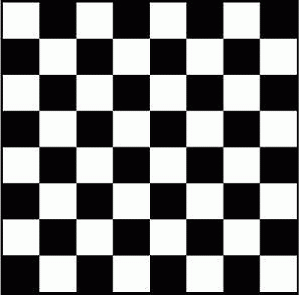Hand embroidery has been used for many centuries to add decoration to fabrics. With the invention of the automatic loom came the production of looms that would create ornamental effects similar to that of embroidery.
Clipped or Unclipped Spot Weave
Embroidery like designs may be achieved through the use of extra warp and extra filling yarns. In the clipped spot weave, either an extra shuttle or an extra set of warp yarns interlace to create a simple woven design. The extra yarns are carried along as a float on the wrong side of the fabric when they do not appear in the design. After the cloth is completed, the long floats may be cut away (clipped) or left uncut (unclipped).
If clipped, which is the most common practice, the yarns form a characteristic “eyelash” effect. Sometimes these fabrics are used inside out for design interest.
The durability of the design depends on the closeness of the weave of the fabric into which it is woven. Some domestic dotted Swiss fabric is constructed by the clipped spot weave. This sheer cotton fabric uses small clipped spot yarns in contrasting color to create a dotted surface design. Dotted Swiss may also be made with flocking or with plastic dots, much cheaper options.
Interwoven, or Double-Cloth, Fabrics
Interwoven fabrics are also called double-cloth fabrics. They are made with three, four, or five sets of yarns.
Double-faced fabrics are made with three sets of yarns. Woven either from two sets of warp yarns and one filling yarn or from two sets of filling yarns and one warp yarn, the effect of the weave is to produce the same appearance on both sides of the fabric. Some blankets and double-faced satins are examples of fabrics that are woven in this way. Fabrics made with four sets of yarns use two sets of warp yarns and two sets offilling yarns.
Yarns from both layers move back and forth from one layer to another, as required by the design. In some areas the two fabrics are totally separated; in others, all four sets of yarns are interwoven. The two layers of these fabrics cannot be separated without destroying the fabric. The cut edge of the fabric will show small “pockets” where fabric layers are separate. The pocket boundaries are the point at which yarn sets interchange from one side of the fabric to the other.
Fabrics with five sets of yarns are produced in the same way as double-woven pile fabrics. Two separate fabric layers are constructed. Extra yarns travel back and forth between the two layers to hold them together. These fabrics are often reversible, with one side being of one color and one side of another color. If the connecting yarn is cut, the two segments of the fabric can be separated into two individual pieces of cloth
Triaxally Woven Fabrics
Research and development of new fabric construction is constantly in progress. There is, however, another method of constructing fabrics that is closely related to traditional weaving, and it is known as triaxial weaving. The term is derived from trimeaningm “three” and axial, meaning “of or pertaining to the axis or center line.” In other words, triaxial fabrics have three axes or center lines. Traditionally, woven fabrics have a biaxial form or two axes, the lengthwise and crosswise axes.
Triaxial fabrics are usually woven by interlacing two sets of lengthwise yarns with one set of crosswise yarns. Special cams in the loom manipulate the yarns so that the double set of yarns is carried in a diagonal direction. All three sets of yarns interlace. Triaxial weaves are not entirely new. Snowshoes and some forms of basketwork sometimes have been made using a triaxial construction. The major advantage of triaxial weaving is in its stability against stretching not only in the length and crosswise directions but also in the bias. Even those biaxial fabrics with good stability in the warp and filling will stretch in the bias direction. Triaxially woven fabrics have high bursting strength resistance and strong resistance to tearing and raveling. Strength is uniform in all directions.

